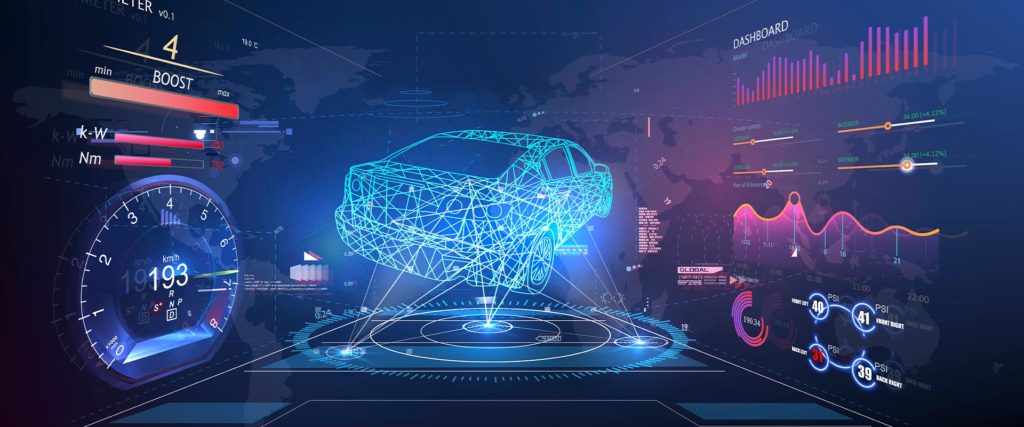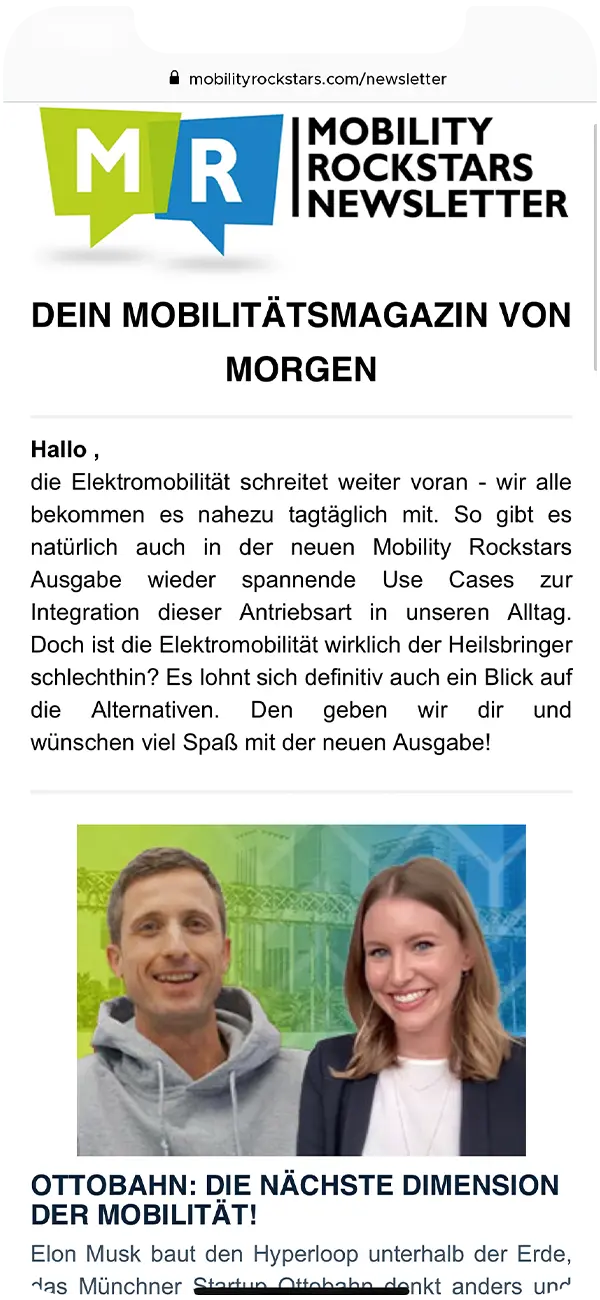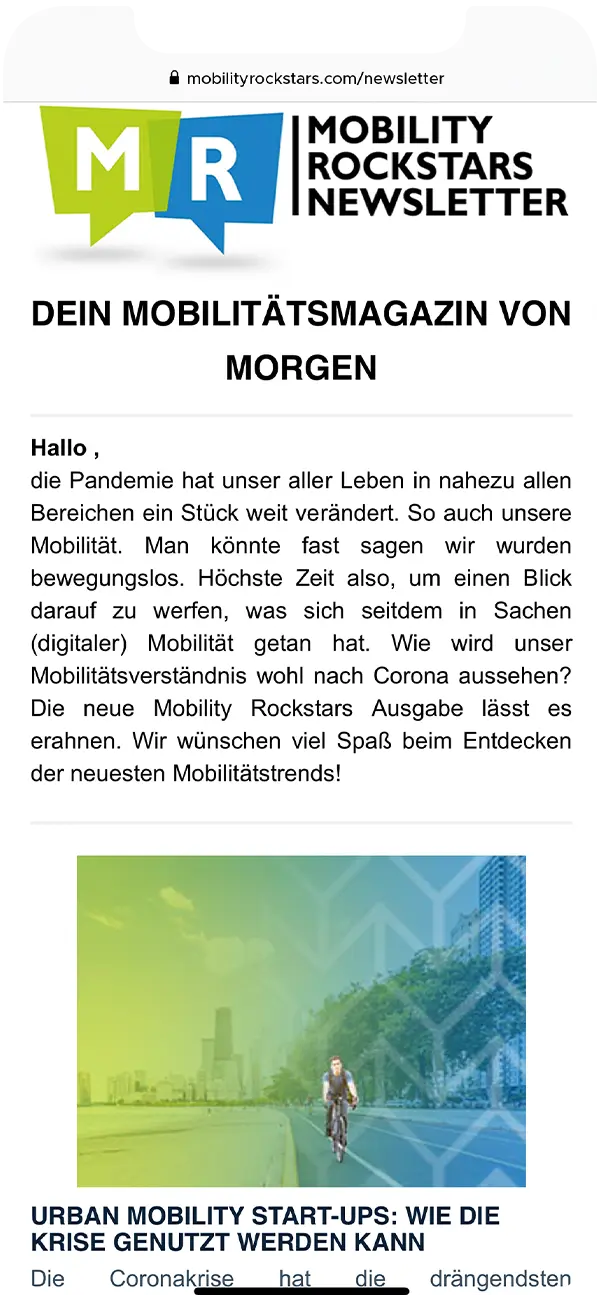Can trust be digitized? The Customer Buying Journey in Car Buying 2023
Trust is one thing, especially when traveling: In the mountains, you trust the mountain guide; when diving, you trust the diving instructor; and if you rent a boat, you trust the captain or at least the boat rental company. A Customer Buying Journey is also a journey that starts with a demand, a desire, an intention, and ends with a product to be purchased. In this article, we take a closer look at how much this journey also has to do with trust, how companies can optimize and simplify this journey, and, above all, what the process of a customer buying journey for car purchases will look like in the coming years.
- Customer Buying Journey in Car Buying: A Journey Everyone Wants?
- Trust in the Customer Buying Journey - Can it be simple?
- The End of Car Dealerships - Where Does the Customer Buying Journey Go on the Digital Path?
- ...and then came the A.I. - Further automation of the Customer Buying Journey
- There was something else: new ownership models, B2B and all the rest?
- The Customer Buying Journey 2023: It's still about people

Marc
Marketing Professional
19.12.22
Ca. 19 min
Customer Buying Journey in Car Buying: A Journey Everyone Wants?
Numerous studies show that in over 78 percent of all cases, buyers of the younger generation in particular prefer to acquire an experience rather than a consumer product. So it’s no wonder that one of the big tasks of the industry and its marketing teams is to create experiences for customers instead of a simple sales object. Even the path to a purchase, the considerations beforehand, the customer’s research and advice are part of this experience, this journey, which is not called the “customer buying journey” for nothing. And travel is always associated with experiences: We remember a special beach, a great restaurant or an exciting experience, rather than the exact price of the plane ticket.
In the automotive industry, Elon Musk has certainly led the way with Tesla. Leaving aside the machinations of what is surely an eccentric mind, one can hardly help but admire the experience Tesla offers buyers: Completely optimized, completely online, a few more little things configured in just a few steps, limited to the essentials – and after the order deadline has passed, a brand-new vehicle is waiting on the doorstep that will in turn offer a completely new journey. But how does this journey work, and does anyone want to take it?
With over 900,000 Tesla vehicles delivered worldwide up to and including the third quarter of 2022, the electric car manufacturer is certainly proving that buyers are, in principle, prepared to engage in a customer buying journey that takes place almost entirely online. But where sales are a success, weaknesses in aftersales are apparent. Certainly: Many aspects can be digitized here as well. This means that functional improvements can be made over-the-air in the form of software updates instead of hardware replacements, even if the point of safety-critical updates in particular is a topic of its own for the automotive industry thanks to current UN ECE regulations. The collection of data during the direct operation of a vehicle also tells us a lot about the experience that customers have with the product, which we can integrate directly into the further journey: Processes can therefore be digitized, and so can a part of the experience.

Trust in the Customer Buying Journey – Can it be simple?
However, the experience part of the customer buying journey also has weaknesses in the Tesla model: Customers repeatedly complain about long waiting times for the appointments that are sometimes necessary, about spare parts that are difficult to procure, and about the quality of repairs. Up to 20 percent of all Tesla shoppers expressed dissatisfaction with parts of the customer journey in a 2019 Bloomberg study. There are many reasons for this, but certainly part of this question is what role trust plays here, especially also in the area of after-sales, cross-sales and re-sales. Will customers who have lost confidence in a company that has grown its business by up to 80 percent while expanding locations, repair facilities and points of sale by only 20 percent continue to buy their next car from that provider? Do customers have a good memory, a good experience in their customer buying journey, and is it lost in the turmoil of the aftersales phase or in the event of a complaint? Who are buyers addressing, and how can we satisfy this target group not only within the scope of the product, but retain them as customers for the future?
The immense role that digitization plays in the evaluation of the journey and its satisfaction can be seen in the mass of different fields of activity that modern automotive companies, from OEMs to system suppliers, must master: In-vehicle IT, data analytics, connectivity, embedded systems, business digitalization, aftersales from workshop booking to service contract business. The industry is trying everything not to lose the trust of customers, to surround it with digitalized processes – and sometimes seems to focus so much on the “customer” that the “journey” is underestimated. And for those, trust is still needed: The “Digital Life Index Report” from 2021 by Publicis Sapient states that 86 percent of all car shoppers still prefer to buy from the dealership in their yard because it is the only place they can get real expertise, as well as the option of a test drive, help with vehicle configuration and, often overlooked, assistance with financing. Especially with regard to the inflationary existing vehicle configurators, there is often a need for help: Why do I also have to change my Ambient Light package after booking an infotainment system with a larger screen, and why can’t I get the Nappa leather combined with Matrix LED headlights? Here, trust in correctly answered questions, not to mention trust in the security of data and information on the Internet, is elementary. For example, the same study states that customers do prefer online experiences, but only if they are simple and satisfying.
In contrast, there is a desire for hyper-personalization on the web, which, if done correctly, can even replace test drives, for example with a 360-degree virtual walk-through – even if it can’t replace the feel of fabric on your hand. However, it must be easily accessible, provide a pleasant experience, and constantly struggle to not lose the trust of such travelers as part of the customer buying journey. After all, once trust has been lost, it can only be regained if the alternatives are less attractive. A point that rarely occurs in the oversupply of the diverse industry.
The End of Car Dealerships – Where Does the Customer Buying Journey Go on the Digital Path?
We can already draw some initial conclusions: A Customer Buying Journey must be an experience, easy to reach, easy to use, should not confuse with an oversupply (but still allow individual variety), and must fulfill the customer’s trust in every aspect. Up to now, the traditional car dealer has played an almost irreplaceable role here. The classic vis-à-vis advice, the good reputation, the experience and sympathy of personal advisors is difficult to convert into digital strategies. After all, a journey is not meant to last forever, and in the spirit of simple processes, quite a few OEMs are emulating the Tesla example mentioned at the beginning: Direct sales are not always the optimal solution, but close cooperation with authorized dealers through to the direct purchase of entire chains (think of MERBAG’s activities in Switzerland) is an ongoing development that serves to standardize, to integrate customers more directly into the digital purchasing and development process. Another piece of trust digitized? Hardly, because even if completely digital customer buying journeys come into question for around 14 percent of all potential vehicle buyers, consultation still plays a role in the process and cannot yet be completely replaced even with sentiment analyses, machine learning and thus complex evaluation options. So hybrid models seem to be the trend of the future – but how can we think this through further?

Keyword Metaverse: It seems to be coming inexorably toward us, the new “Second Life,” the virtual experience with a gamification approach that begins offline, continues online and ends offline, in this example from the desire for a car through research, advice and purchase to the vehicle standing in front of the garage – and then it goes back to the virtual for aftersales, complaints and follow-up advice, upsales and so on. The virtual car dealership is the simplest exercise here, easier even than leasing or buying huge showrooms that actually exist: Any model can be available online, in any configuration imaginable. With the meta-avatar we go to an open-sky house where exotic creatures fly in front of waterfalls, ABBA sing semi-personally for us, and the salesman’s avatar is ready to meticulously answer all our questions. Sure, it’s still the car dealer in the end, only now he or she can sit comfortably in a home office while providing expertise and know-how to customers around the world. But this can also be taken further and digitized: Start-ups such as “Susi & James” are already in the starting blocks to offer virtual, digital employees who can take on tasks online. Today, taking calls on the hotline, tomorrow, multiple choice consulting in the automated avatar that guides through the sales consultation until the threshold of the Turing test is reached and a human intervenes. The time saved here could quickly generate millions in added value industry-wide – Customer Buying Journey digitizes Trust, could be the headline in 2035, because honestly: No industry standard that really helps customers will be established much faster here.
…and then came the A.I. – Further automation of the Customer Buying Journey
Up to this point, things have been quite simple – we digitize what needs to be digitized. Omnichannel analysis (thanks to tools such as Genesys Cloud or Adobe Experience Manager) takes place even before the journey begins: Where does the customer come from, what have they perhaps ordered before, what were they receptive to? Artificial intelligence is already deeply integrated here. Already the request can be recognized automatically, a script extracts data, voicebots and chatbots record first requests automatically. If an agent needs to be added, it can already access data and concerns that could be extracted from emails, chats or even calls. Here are a few more points where A.I. can already provide active support:
- Analytics: VoC (Voice of the Customer) / Feedback, WFM (Workforce Management System), Recording, Reporting
- Outbound: predictive engagement, dialing/scripting, callback
- Self Service: concern recognition, data extraction, concierge services, voicebot/chatbot.
- Inbound routing: predictive routing skills, prioritization, data/context
- Agent: Agent Assist, attachment analysis, 360° view, blending
Modern A.I. – which with modern providers already operates completely in the cloud and only in the case of the specific customer still works on premise – can optimize the entire customer journey. While the customer is on the website, a corresponding system can already recognize a lot of data: What browser is the customer using, is there already demographic data because the customer has already logged in? What is he looking at? This is where “predictive engagement” comes into play, thanks to which it is possible to recognize in advance when it is best to approach the customer, but also when the customer is likely to add something to their shopping cart or when they have a high purchase intention. But even if the customer is in danger of dropping out, an automated offer can be launched, such as a discount or the involvement of a service agent. This interaction offer can significantly increase the conversion rate and is one of many means proactively supported by A.I. that is becoming increasingly important in a modern customer buying journey. It goes without saying that this also establishes a renewed digitization process of customer trust: If the customer feels valued, treated with attention, and receives an unobtrusive offer for interaction and advice, this can continue the path of moving from the classic contact person in the yard of the car dealership to the digital offer.
There was something else: new ownership models, B2B and all the rest?
We would like to explain more about the customer buying journey in B2B, but the situation is less clear. The aforementioned stylistic devices, from predictive engagement to analytical evaluation via Experience Manager or Genesys, are still relevant – but of course there is no such thing as a classic customer journey in this area. Regardless of how good or strong a voicebot is, the Sixt car rental buyer still won’t have talked to BYD via chat to order 100,000 vehicles from China for the fleet starting in 2023. Nevertheless, a conscientious use of predictive engagement could have provided clues as to where even a major customer was at risk of bailing out, or at which touch point interaction could have been offered. It is also certain that Sixt’s decision in favor of BYD was hardly due to a less than optimal customer journey, but rather for economic and political reasons – a signal has been set here, a beacon for an entire industry that was previously certain that car rental companies largely used German OEMs in their fleets.

Nevertheless, it can be deduced that here, too, large amounts of data exist, of behaviors and decisions, which can flow into an evaluation of experiences and also predestine the B2B model for the creation of a customer buying journey.
Again, the situation is somewhat different for new ownership models such as car sharing and car pools, subscription models, or class systems in which no specific vehicle is rented or leased, but rather a class (e.g., “mid-size SUV”). The industry currently needs to find out what an online journey can look like here – these models are too far removed from the classic product purchase journey familiar to date, and the overlap with B2B models is too strong. But again, the toolchain is basically there – but the decision making here is not yet so digital that we can already get the amount of data from this to further analyze the customer buying journey to optimize the processes. Sentiment analysis, omnichannel collections of customer data, or predictive engagement are, of course, already tools that we can use in a cloud-based and A.I.-supported journey. How long do customers deal with the products, what questions do they have, where are jumping off points and what has favored them? Insights that can then be used to good effect at the final discussion table – which is still indispensable in B2B – and can simplify the process of finding a product.
The Customer Buying Journey 2023: It’s still about people
We’d like to spare you from saying, “People are the center of attention,” but that’s the way it is, unchanged. The amount of information we can get from the moment a customer enters the Customer Buying Journey, the many interaction recommendations during the journey, support via A.I. and trying to look into the immediate future with data: All of this all too often enables a true advisor to be there for the customer with that data and help them have an easy and satisfying Customer Journey. Part of the trust can now be digitized: Customers provide data online, which undoubtedly requires a high degree of trust. Customers get advice, configure, and go all the way to close the sale. More and more customers are also taking the last step, but as long as over 80 percent of customers still prefer to close deals with real salespeople, the industry still has work to do. The Last Mile is the most difficult, and even though we have vast amounts of data to guarantee optimal experiences and satisfy a generation that puts emotion before rationality, in keeping with the Pareto Principle, it’s the last 20 percent that deserves 80 percent of our attention.
So the hybrid model is the status quo for the next few years, and it doesn’t seem to be going away at the moment. The oft-mentioned “agent assist” that many of the new tools are working toward remains essential to bringing the Journey to a satisfying conclusion. Meanwhile, new solutions are hitting the market by the hour, and markets like aftersales and referral marketing are already in their prime, demonstrating how clean data preparation can work for new sales and satisfied experiences on the customer buying journey. Automation is on the rise, omnichannel solutions are giving us 360-degree insight, and industrial machine learning is simplifying learning for the industry, which today still has to admit defeat to a good salesperson’s gut instinct, but is on its way to setting tomorrow’s emotional marketing and setting new standards. But let’s answer the crucial question: How to digitize trust? Answer: We can’t digitize trust because trust is something deeply human, and that’s a good thing. But we can create an atmosphere of trust and cooperation, so that in the end we can communicate optimally from person to person, with genuine empathy – and a stronger back thanks to ideal data evaluation.








